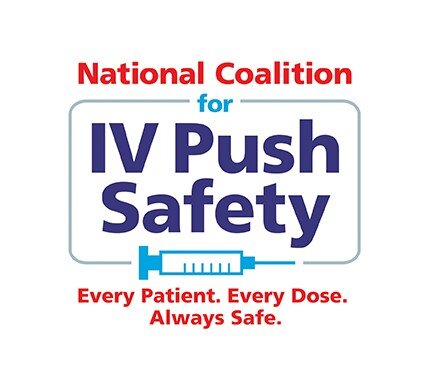According to a survey conducted in 2018 by The Institute for Safe Medication Practices (ISMP), many nurses continue to dilute intravenous push medications (IVP) unnecessarily and one of the reasons continues to be the belief that diluting small volume IVP medication is safer for the patient. The survey revealed that 94% of respondents dilute to be able to give the drug slowly and 25% dilute to be able to measure small-volume doses accurately.
An article that appeared in American Nurses in April 2019 Tackling the dangers of unnecessary I.V. dilution, written by Steven Jarrett, PharmD, and Catherine Spader, RN, discusses how an “organization’s practice culture can be at the root of unsafe I.V. push practices. Nurses may believe they have to dilute medications in ready-to-administer syringes because the practice was learned as a part of the culture that spreads from one nurse to another. And different practice cultures in different units can exist in the same organization”.
Take for instance Dilaudid 0.5 mg IVP typically comes in a ready-to-administer (RTA) syringe of 0.5mL. Nurses will withdraw the medication out of the RTA syringe into a prefilled syringe of 0.9% normal saline. According to Steven Jarrett “Nurses are making more work for themselves by diluting drugs unnecessarily, and the practice doesn’t provide value to patients; instead, it creates contamination and medication error risks”. Many nurses are not aware that the FDA has only approved prefilled 0.9% normal saline syringes as flush devices only; they are not approved for the dilution or reconstitution of medications.
A typical order for an opioid naïve patient might be Dilaudid 0.2 mg IVP q 3 hours. If you are provided with a RTA syringe of Dilaudid 0.5mg in 0.5mL, what is the safe way to administer the prescribed dose? First do your math to determine how much of the 0.5mL to give. Our calculation tells us that we will need to administer 0.2 ml.
According to expert opinion, the safest way to administer a small volume medication in a RTA syringe, such as the example above would be to have a second nurse independently verify your calculation and be the witness to waste the 0.3ml. If you are administering through a saline lock take two flush syringes and the RTA medication syringe to the patient’s bedside. Complete your 10 rights of medication administration, (yes there are 10 now: https://nurseslabs.com/10-rs-rights-of-drug-administration ), scrub the hub or remove your disinfectant cap, flush your saline lock and check for patency, scrub your hub in between each access of the saline lock (per Infusion Nurse Standards), allow to dry (as it is the drying that kills bacteria), administer your medication from the RTA syringe into the IV tubing, scrub the hub again, and using the second flush syringe, flushing at the same rate as indicated for the medication. The small volume 0.2mL won’t reach the patient no matter how fast it is injected. The rate of the flush will control the rate of administration.
Many nurses believe that they cannot control the rate of administration of small volume medications. You do not need to slowly inject the drug because the small volume is still in the IV tubing – that is why the rate of the flush is critical to control the rate of administration. The second flush being administered at the same rate of the medication is to properly control the rate of administration. Many nurses have been observed giving their small volume IVP medication through a running IV; however, this process will deliver your medication at the rate of your running IV. The safer way to administer through a running IV is to pause your pump, flush the line, administer your medication through the hub closest to the patient, flush at the prescribed rate of administration for the medication, then restart your pump. So, you see there is no need to dilute the drug.
For more information on this topic, I would encourage to read through these articles: https://www.myamericannurse.com/wp-content/uploads/2019/04/ant4-Fresenius-IV-Push-325a.pdf




